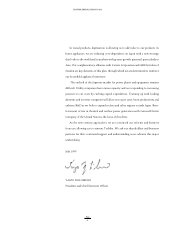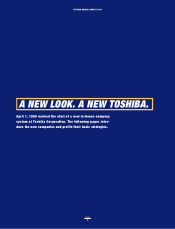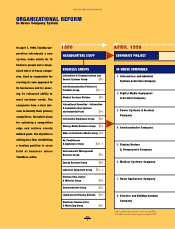Toshiba 1999 Annual Report Download - page 18
Download and view the complete annual report
Please find page 18 of the 1999 Toshiba annual report below. You can navigate through the pages in the report by either clicking on the pages listed below, or by using the keyword search tool below to find specific information within the annual report.
TOSHIBA ANNUAL REPORT 1999
Page
16.
A NEW LOOK. A NEW TOSHIBA.
The world semiconductor market posted
negative growth in 1998, due to factors
such as price erosion, particularly in
memories, and sluggish demand for semi-
conductors for consumer products. Look-
ing ahead, growth is expected, particularly
in logic devices and system LSIs for game
consoles, network equipment, PDAs and
communications equipment. Toshiba is
shifting resources to these growth fields
and backing them up by forming key stra-
tegic alliances. Through these measures,
the company will improve its ability to
Semiconductors are the vital building block for the coming digital society. The
Semiconductor Company will advance active business expansion in system LSIs
and other growth areas. In doing so, the company will utilize its advanced process
technology, highly sophisticated product development capabilities, and experi-
ence of selling a broad line of devices to customers around the world.
The Advanced Microelectronics
Center in Yokohama is the focal
point for joint research with
Fujitsu into 0.13-micron process
technology, the basis for post
next-generation semiconductors.
Toshiba is leading the industry in
128/144Mbit RambusTM DRAMs.
Semiconductor Company
























